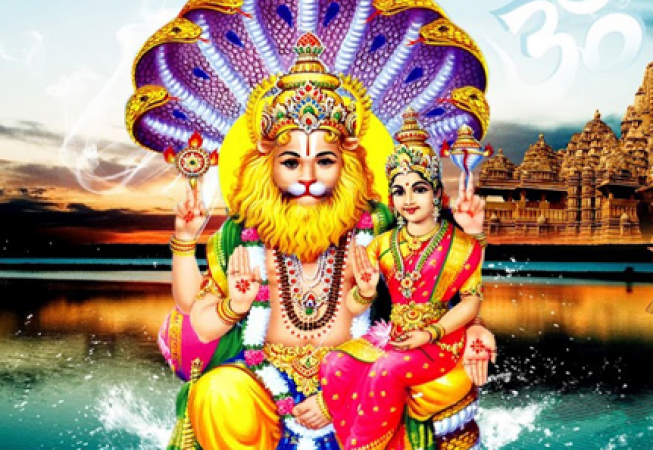
Lakshmi Narasimha, the fierce and benevolent incarnation of Lord Vishnu, is revered by millions of devotees worldwide. Temples dedicated to Lord Lakshmi Narasimha hold immense significance in Hindu culture, embodying his divine presence and providing a space for spiritual devotion. This article delves into the captivating history of Lakshmi Narasimha temples and provides insights into the rituals and worship practices associated with these sacred abodes.
I. Historical Significance of Lakshmi Narasimha Temples:
The roots of Lakshmi Narasimha temples can be traced back to ancient times, where the mythology and legends associated with the deity were woven into the fabric of Indian history. Exploring the historical context of these temples not only unveils their architectural grandeur but also sheds light on the religious and cultural beliefs that surround them.
Mythology and Legends:
The legend of Lord Narasimha finds its origins in Hindu scriptures such as the Puranas and the Mahabharata. The story of Prahlada, the devotee of Lord Vishnu, and his encounter with the fierce avatar of Narasimha is a prominent narrative that resonates within the walls of Lakshmi Narasimha temples.
Architecture and Iconography:
Lakshmi Narasimha temples are known for their unique architectural styles, reflecting the regional influences and cultural diversity of India. From the exquisite stone carvings to the intricate detailing, these temples showcase the artistic brilliance of ancient craftsmen. The iconography of Lord Lakshmi Narasimha, with his lion-like face and the Goddess Lakshmi seated on his lap, evokes awe and devotion.
II. Worship Practices in Lakshmi Narasimha Temples:
Worship rituals play a crucial role in Lakshmi Narasimha temples, providing devotees with a means to connect with the divine energy and seek blessings. Understanding the essential practices and procedures associated with temple worship enhances the spiritual experience and deepens one's connection with the deity.
Temple Etiquette and Entry:
Before entering a Lakshmi Narasimha temple, it is customary to adhere to certain guidelines and show respect for the sacred space. Observing basic etiquette, such as removing footwear and maintaining silence, fosters an atmosphere of reverence.
Offerings and Prayers:
Devotees offer various types of offerings to Lord Lakshmi Narasimha as a symbol of their devotion. These offerings may include flowers, fruits, coconut, incense sticks, and camphor. Engaging in prayers and chanting hymns dedicated to Lord Narasimha is believed to invoke his divine presence and receive his blessings.
Festivals and Celebrations:
Lakshmi Narasimha temples come alive during festive occasions when devotees gather to celebrate the glory of the deity. Festivals like Narasimha Jayanti and Vaikunta Ekadashi witness elaborate rituals, processions, and special pujas, attracting pilgrims from far and wide.
Spiritual Practices and Seva:
Apart from regular worship, Lakshmi Narasimha temples often offer opportunities for spiritual practices and seva (selfless service). Engaging in activities like meditation, yoga, and participating in community service activities within the temple premises help foster spiritual growth and promote a sense of unity among devotees.
Lakshmi Narasimha temples hold a special place in Hindu culture, embodying the fierce yet compassionate energy of Lord Vishnu's incarnation. These sacred abodes not only showcase the architectural brilliance of ancient India but also provide a space for devotees to seek solace, receive blessings, and deepen their spiritual connection. By understanding the historical significance and participating in the worship practices associated with Lakshmi Narasimha temples, one can embark on a transformative journey of faith, devotion, and self-discovery.
Kerala Devotees Engage in KARKIDAKA VAVU BALI Ritual Statewide